Bruce Nesmith Interview
Bruce Nesmith had a storied career in gaming, starting at TSR designing and writing D&D adventures and then designing games in The Elder Scrolls and Fallout series for Bethesda. Bruce has recently retired from game design and is trying his hand as a fiction writer of a Norse mythology trilogy focusing on Loki. Bruce talks about some of his favorite work he has designed, his career transitions between tabletop gaming, video gaming, and as an author, and about his new books.
Johnathan Stringer (RPGamer): You’ve had a long career in the gaming industry as a video game and tabletop game designer and writer. Can you give us a high-level overview of your career?
Bruce Nesmith: Fresh out of college, I started out at TSR in the early 80s as a computer game programmer. Unfortunately, that department failed and I transferred in the design department as a writer. I started off with Marvel Superhero RPG products and D&D products. In the mid 80s I left the industry for a few years, although I continued to do freelance work for them. When I returned a few years later, I worked on several high profile projects, including the 2nd edition Ravenloft Boxed Set, and the Dragonstrike board game.
In the mid 90s, I left to join Bethesda Softworks and worked on The Elder Scrolls II: Daggerfall. I left that industry in the late 90s, only to return in 2004. I remained with Bethesda until I retired in 2021. During this long tenure, I worked on The Elder Scrolls IV: Oblivion, and was fortunate enough to be the lead designer for The Elder Scrolls V: Skyrim. I also contributed substantially to Fallout 3, Fallout 4, and Fallout 76.
JS: What would you say are the biggest differences in design between video games and traditional tabletop roleplaying games?
BN: With tabletop games, you want things streamlined and digestible. You want mechanics that players can easily understand and execute quickly. The excitement is in the story and the total freedom of choice. You have to leave room for the players to think outside of the box and be creative.
With video games, all choices must be accounted for in advance. You can leave room for creativity within the mechanics of the game, but you have to limit the solutions to a quest and account for all possible variations. However, you have the freedom to make far more complex mechanics. You can let the computer do the hard parts with math, giving the player a far richer character because he doesn’t have to maintain the complexity.
In a video game, the player must complete the story the designer has created, with only the variations the designer has allowed. With a tabletop game, the players can drive the story in unanticipated directions because the game master can account for them.
JS: Which do you prefer and why? Why did you make the transition from tabletop to video games?
BN:I love both! For me, creating video game RPGs is a bit more rewarding. However, playing tabletop games is a bit more rewarding. A lot more skill and craftsmanship needs to go into a video game. The designers have to do a lot more work, creating the game systems, writing every line of possible dialogue in advance, and building the play spaces. It’s a team effort requiring hundreds of extremely talented people. Creating a tabletop game is either done alone or in very small teams. What you design must be looser.
However, playing a tabletop RPG puts you in direct contact with other players. You play as a group, and create a story or campaign together. Playing a video game is a solitary experience, even when you are in group play or in a guild. With the group experiences, the pace is fast and doesn’t allow for a lot of group interaction.
I’ve always been a computer guy. I got my first job at TSR based on my programming skills. By the mid 90s, I had done just about everything in tabletop games, and the video game industry was really taking off. I wanted to be part of that. It was sad to leave my friends at TSR behind, but I’ll never regret joining the team at Bethesda.
JS: Which project was your most memorable, favorite, or one you are most proud of?
BN: In tabletop gaming, the Ravenloft Boxed Set for 2nd edition AD&D was my best work. I have to take a moment to thank Tracy Hickman for creating the original adventure that I got to turn into a campaign world. Ravenloft helped me refine several ideas I had about tabletop roleplaying and put them into practice, such as rules that encourage players to roleplay instead of suffer die roll consequences.
In video gaming, definitely The Elder Scrolls V: Skyrim. Even ten years later, more people are playing and buying Skyrim than 90% of the game made that year. I got the chance to implement many of the things I dreamed about, such as the Radiant Story system, which allowed the game to respond to the player’s actions in unprecedented ways. I got to revamp the magic system, building something fresh and new.
JS: Can you elaborate more on the systems you designed for Skyrim? You mentioned you were able to implement systems you dreamed about. Did what’s in the game completely match the design dreams you had, or did they need to be altered?
BN: The most sweeping and complex system I worked on was the Radiant Story system, although it wasn’t the only one. Radiant Story attached data to just about everything in the game. We created whole new data structures just for that. NPCs gained data defining their relationships to other NPCs, such as father, sister, apprentice, or friend, etc. Dungeons gained location object data that defined their type, such as bandit or creature cave. Objects within the dungeons gains function data, such as boss chest, prisoner placement, key for door, etc. Most importantly we created an event manager that watched for events, such as death, or item dropped, or spell cast.
As an example, if the player killed an NPC, the event was trapped and a quest started. It looked for a related character, such as a family member or friend. That new NPC was given a role in the quest of Avenger and was sent out to attack the player. Another example is when the player drops something valuable. The game looks for any two nearby NPCs. They will both move the item and begin arguing over it. If a guard is nearby, he will intercede. Last example, the player casts a spell in town and an NPC is picked that wants to learn that spell and will pay the player.
Basically, the game world comes to life. Instead of sitting there passively while the player does things, it reacts to his actions. Adventure and story are created by the player’s actions. This was revolutionary at the time. It’s one of the principal reasons Skyrim remains popular today.
Everything you create in a video game undergoes significant review and refinement. Nothing ever matches the original vision. This is a good thing. The dream is usually flawed or incomplete. It needs that constant improvement to become functional, let alone great. Radiant Story was no exception. It went through so many changes, all for the better.
JS: Do you have any examples of designs or ideas that sounded good in theory, but once implemented, they didn’t work as well as planned, or just weren’t feasible with technology limitations?
BN: Interestingly, Radiant Story did exactly this. In the early days, we were so excited by the potential, that we actually considered making the entire Companions faction quest line be completely procedurally generated by Radiant Story. Early implementations of Radiant Story were disastrous. The quests were ridiculous and tedious. The player would be sent all the way across the map to kill giant rats in someone’s basement. Grandmothers would attack you for killing their grandchildren. We quickly realized we needed serious limitations on Radiant Story quests. An entire faction quest reliant on Radiant Story was ludicrous. We learned a valuable lesson. Radiant Story is just a tool. It needs to be used properly in the service of making great game play. It is not an end product. Once we came to see it as just a tool, albeit a powerful one, we went on to make some great quests and stories with it.
JS: What did you take or use from your time at TSR designing D&D modules that you applied in your work at Bethesda?
BN: Pacing is something that grew out of my days at TSR. Ideally, a table top game works in 4-6 hour chunks, which is how long most groups play at one time. For video games, story fatigue or dungeon fatigue sets in much sooner, after 30-60 minutes for a story, and less for a dungeon. But the principle is the same. Break your work up into digestible blocks with clear endings and beginnings. Gameplay should include calmer periods, such as talking to NPCs, to break up the high tension combat experiences.
JS: What is your favorite quest you wrote for the Bethesda games you worked on?
BN: For The Elder Scrolls IV: Oblivion, I wrote the entire Thieves Guild questline. However, the Ghosts of Vitharn quest I wrote for the Shivering Isles DLC is my favorite. A group of ghosts replays a battle over and over. Your job is to change the outcome by changing three key moments. Each time you change one thing, the ghosts replay the battle differently. Once everything has been changed, the outcome is different and the ghosts are laid to rest.
JS: In your career, you have experienced many advancements in technology and major shifts in design philosophies in the gaming industry overall and with RPGs. Where do you feel the industry is headed? What do you think are the states of tabletop and video game RPGs now and in the future?
BN: I’m more in touch with the current state of video game design than of tabletop design, but I’ll give you my thoughts on both.
Tabletop RPGs are having a renaissance, largely due to 5th edition D&D. In my opinion, one of the reasons is that 5e emphasizes getting on with the story over rules. Everything is quick and easy to do. I think they also learned from the video game industry and made their character’s power curve much steeper, and therefore more rewarding. Players love that, but GMs can get frustrated. I recently finished a four year long 5e campaign that went from level 1 to level 20, so I’ve seen the full spectrum.
I think tabletop games will continue to emphasize streamlined rules and complex campaigns. Story over systems. I also think the open source philosophy is genius. It encourages others to expand your product line. My final prediction is that we’ll continue to see a merging of computer-assisted tabletop gaming. Online systems such as Roll20 and Fantasy Grounds are showing that you can have your cake and eat it too by having all the benefits of a video game combined with the benefits of live play with a game master.
Video games have been reaching for greater realism for twenty years. That will continue. Graphics are still king, although strangely we’ve reached a plateau where they don’t matter as much in my opinion. However, I think it will be a long time before video game companies stop trying to make each game look and feel more realistic than the one before. The video game industry has always believed bigger is better. However, I think that has limited value now. Some segments of the industry will continue to make things bigger, such as MMOs, but in my opinion, there is a movement toward new experiences, which means new games. I think you’ll see a lot of diversification where studios are forced to explore new things rather than just sequels of old titles. Not that sequels are going away for a long time.
JS: Why did you leave your career in game design to become an author?
BN: I have done just about everything I wanted to do with making video games. And just as when that happened with tabletop games when I was at TSR, it was time to move on. I’ve always wanted to try my hand at writing novels, and I finally reached a point in my life where I could afford to do that.
JS: Can you give us a synopsis of your novel? Is it a one-off or will it be a part of a series?
BN: Mischief Maker is the first of a trilogy. The second book, Odin’s Escape is written, and is going through the process of editing and production. It will be out shortly.
The story revolves around Loki, who is currently hiding out on Midgard after surviving Ragnarok. He gets by working as a stage magician in the suburbs of modern day Chicago. Then someone tries to kill him. Twice. So he has to return to Asgard and the other realms of Norse mythology to figure out who has it in for him. Along the way, he befriends giants, discusses philosophy with Odin’s ghost, and tricks the old gods repeatedly. He is also forced to reconsider what it means to be a god and a man.
My vision of the universe of Norse mythology puts a modern spin on the old tales. The old adage of “history is written by the victors” applies to him. While he is still a trickster and guilty of some crimes, such as starting Ragnarok, he is innocent of others. For example, he didn’t kill Balder. However, Thor and Odin controlled the narrative and cast him as the sole villain.
JS: Do you think your work in the gaming industry influences your writing or the way you write?
BN: Absolutely! I have decades of experience at world building and applied it to my novels. Asgard, Jotunheim, and the other Norse realms are very well developed in my books. My years of writing dialogue in different voices definitely paid off. I hope I have also told a compelling story full of excitement, wonder, and humor.
JS: Where can fans of your work find more info or purchase your novel?
BN: You can purchase it from Amazon, either in Kindle or soft cover formats.
We would like to thank Bruce for the informative interview and peek into his career as a designer of some of our favorite RPGs. We wish Bruce the best of luck in his new venture as a fantasy author.
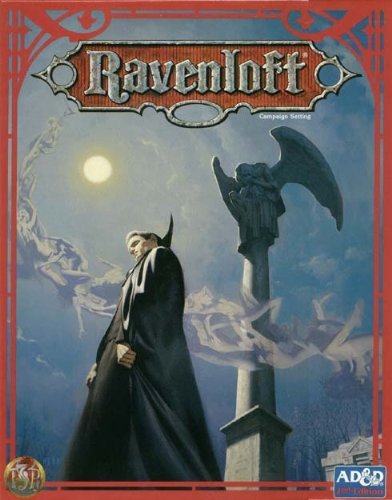
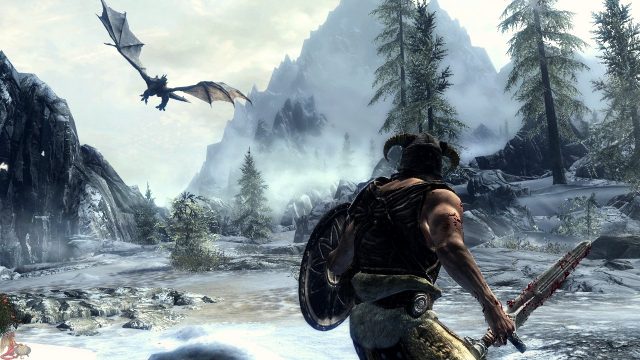
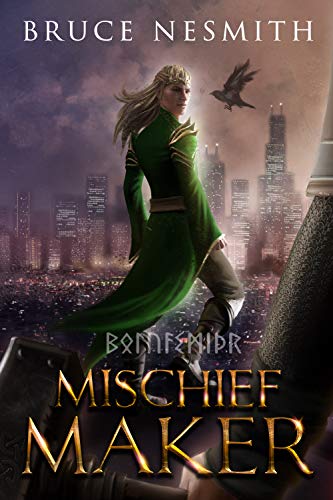
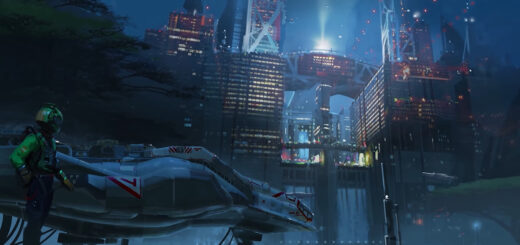

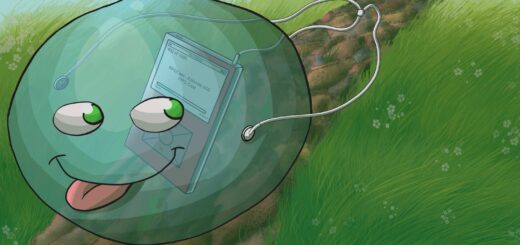



Recent Comments